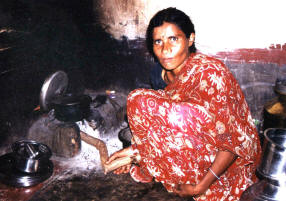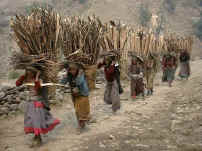|


|
One of the worst problem for 2-3 billion people in the world is cooking on wood fires. They cook slowly, the smoke causes glaucoma and lung diseases for the women and children, the children get burned in the fire, and they burn much too much fuel that must be gathered from greater and greater distances. Our heart bleeds for our
less fortunate cousins and we believe gasification of biomass holds a significant part of the answer.
|
 |
| We became aware of this world cooking problem in 1985 on a trip to South Africa, and invented a new type of
gasifier, useful for cooking and heating stoves. One solution to the world cooking problem is to convert wood and other biomass to gas which can then be burned cleanly in a
"WoodGas Stove."
After 23 years of research, testing, and finding a
manufacturer, we have a WoodGas Stove that you can
buy in our store. We hope to see a billion of these stoves in use in the next few decades. |
 |
These stoves are NOT wood stoves. They are based on gasifying the wood in the lower section with a small amount of air and then burning the gas with about 6 times as much air for clean combustion. They generate respectively 3 and 6 kW of clean heat,
The new WoodGas XL stove was tested by the Aprovecho Research Center and found to perform very well. They reported �The WoodGas XL stove met or exceeded all performance benchmarks and is hereby certified as seen below.�
While most wood stoves burn stick wood, the wood gas stove can work on any reasonably dense biomass, such as sticks, twigs, woodchips, wood pellets, seeds, shells, and even coal. None of these are currently used for �wood cooking�.
Wood Stoves:
Alas, most wood cooking is not done with gas, so will be smoky and less efficient. However, there has also been a lot of progress in more conventional wood cookstoves, so be sure to check on
wood cookstoves. We at the BEF are peripherally involved with many groups developing these stoves and are also interested in improving
them as well. We know a lot about simple stove fabrication and insulation techniques. In particular, visit the
Aprovecho website, and if you are serious, consider visiting their workshops for a week in Summer, or attend their annual stove event.
We are currently working on developing a biomass cookstove for field kitchens for the army. We presume that what works there will also work for many others. Stay tuned.
Questions? Contact Dr. Tom Reed at tombreed2009@gmail.com
|